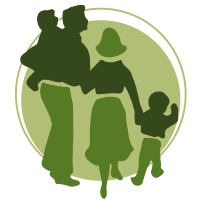The long spells of warm spring and summer weather has most of us look forward to the arrival of the warmer weather but for some unlucky people the season brings misery in the form of hay fever and seasonal allergic rhinitis often caused by pollens from trees and grass.
Proteins in the pollens irritate the delicate membranes of the nose and eyes causing inflammation. Symptoms include red, itchy, watery eyes and runny or congested nose.
Not all hay fever sufferers react to the same pollen therefore the timing of symptoms should be noted. Generally tree pollen is present from February to May with the peak time being in April. Grass pollens are prevalent in June and July and weed pollens (eg nettle) will be worse in July and August. Hay fever that begins in late summer and continues into the autumn may be a mould allergy. It is possible to have allergy testing to pinpoint which plant pollens you are sensitive to – consult your GP or nutritional therapist.
So what can be done to alleviate the symptoms? As always being forewarned is forearmed: some simple preparations now can reduce the severity of attacks later in the season.
If you are lucky enough to be able to buy honey produced locally, take a teaspoon every day. It has been suggested that ingestion of tiny molecules of pollen in local honey is believed to help build resistance to pollens when they appear in full force later in the season.
Amongst various natural remedies, butterbur is a herb that has undergone scientific trials showing a substantial health benefit for relieving hay fever.
Butterbur (Petasites hybridus) has been shown to relax blood vessels and various smooth muscles in the body. It contains chemicals that are also known to reduce inflammation, as demonstrated in human studies. Some studies have also shown that butterbur extract performed as well as a common antihistamine drug taken by hay fever sufferers, but without causing drowsiness.
Bioflavanoids are plant compounds that have shown anti-allergic and anti-inflammatory activity. Along with Vitamin C, these supplements can help prevent the formation of histamine – the chemical that causes the common reactions of streaming, itchy eyes and runny nose. Foods rich in the bioflavanoid quercitin include onions, garlic, green tea, red wine and dark chocolate (70%+ cocoa solids). Vitamin C is found in broccoli, green peppers, citrus fruits, strawberries and blackcurrants, kiwi, cabbage and cauliflower.
Plant sterols (phytosterols) are fats found naturally in plant foods. Phytosterols are highly versatile substances that have been shown to be useful in the management of several conditions include immune disorders. Phytosterols inhibit the release of prostaglandins (hormone-like substances) thus reducing the production of histamine and its attendant symptoms such as itchy eyes and sneezing. Plant sterols are present in all plant foods with soy and whole grains, particularly whole oats, being rich sources.
Omega 3 fatty acids found in flaxseeds and cold water fish such as salmon and mackerel, can affect chemical pathways in the body to help ease allergy symptoms and reduce inflammation.
Vitamin E taken during the pollen season alongside other anti-allergy treatments has been shown to reduce the severity of hay fever symptoms by 23%. Good sources of dietary Vitamin E include cold pressed wheatgerm and sunflower oils, hazelnuts, sweet potato, avocado and spinach.
A strong immune system is essential to help fight off allergic symptoms. The Vitamins A, C, D, E and minerals zinc and selenium are all antioxidant supplements that can help immune function.
Vitamin A is found in calves liver, egg yolk, watercress, squash and oily fish such as mackerel and herring. Likewise, top sources of Vitamin D include mackerel, herring, sardines, as well as eggs and cheddar cheese.
Zinc can be obtained from pumpkin seeds, wholemeal bread and red meats. Eating just four to five brazil nuts daily can provide your recommended intake of selenium but other sources include fresh tuna, sunflower seeds, wholemeal bread and cashew nuts.
There are other measures to help ward off the worst effects of pollen:
- A thin layer of petroleum jelly around and just inside the nostrils can trap minute pollen particles and prevent them from being inhaled and starting an allergic reaction.
- Steam inhalations help to reduce the “blocked nose” feeling.
- Most national weather forecasts now include a pollen count so take note and keep windows and doors shut to reduce the chances of pollens invading your house.
- Wash your face and hands regularly and if you have been in the garden or out and about.
- regularly wash bed linen and gardening clothes to minimise the risk of pollens attaching to clothes. Consider drying your washing inside rather than on the washing line.
If you are taking any medication, always check with your GP or health practitioner before taking any herbal or vitamin supplements.



